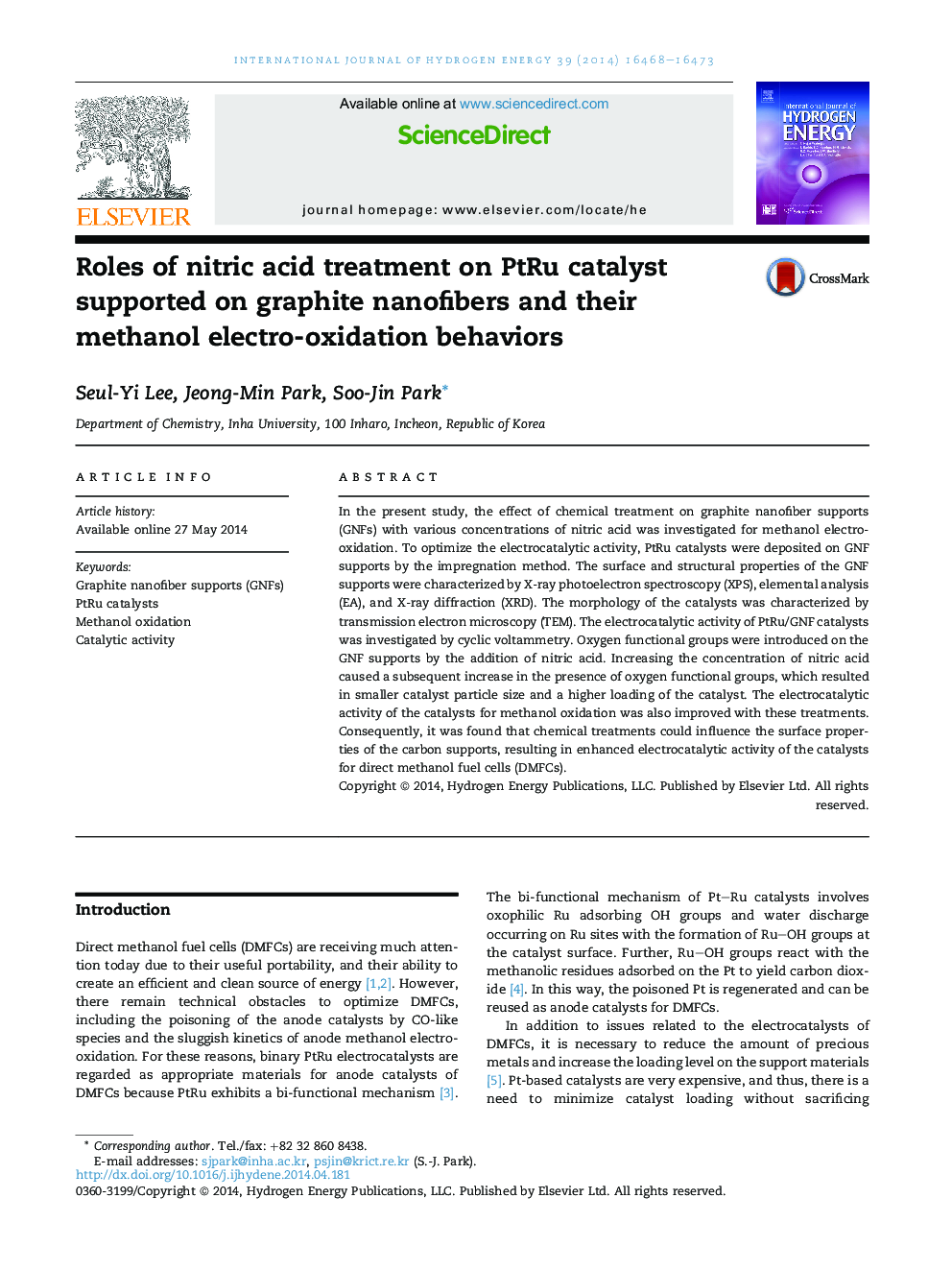| Article ID | Journal | Published Year | Pages | File Type |
|---|---|---|---|---|
| 1280984 | International Journal of Hydrogen Energy | 2014 | 6 Pages |
•HNO3 treatments make the introduction of O-functional groups onto GNF surfaces.•Oxygenated GNFs lead to the optimal conditions of the PtRu reduction reaction.•Loading level of PtRu catalysts gradually increases with increasing of HNO3 conc.
In the present study, the effect of chemical treatment on graphite nanofiber supports (GNFs) with various concentrations of nitric acid was investigated for methanol electro-oxidation. To optimize the electrocatalytic activity, PtRu catalysts were deposited on GNF supports by the impregnation method. The surface and structural properties of the GNF supports were characterized by X-ray photoelectron spectroscopy (XPS), elemental analysis (EA), and X-ray diffraction (XRD). The morphology of the catalysts was characterized by transmission electron microscopy (TEM). The electrocatalytic activity of PtRu/GNF catalysts was investigated by cyclic voltammetry. Oxygen functional groups were introduced on the GNF supports by the addition of nitric acid. Increasing the concentration of nitric acid caused a subsequent increase in the presence of oxygen functional groups, which resulted in smaller catalyst particle size and a higher loading of the catalyst. The electrocatalytic activity of the catalysts for methanol oxidation was also improved with these treatments. Consequently, it was found that chemical treatments could influence the surface properties of the carbon supports, resulting in enhanced electrocatalytic activity of the catalysts for direct methanol fuel cells (DMFCs).
